When decorating a kitchen or dining area, one of the most impactful decisions you would make would be your choice of a kitchen island or bar counter. A kitchen island greatly expands the available surface area that you get to work with, while a bar counter provides you with an additional preparation surface along with a serving surface for your guests.
Let’s dive deeper into some of the key differences between having a kitchen island or a bar counter:
Kitchen Island
Kitchen islands are typically placed in the middle of kitchens, surrounded by cooking stations to provide the cook with a convenient space to place raw ingredients, ready dishes, or mixing bowls. Because they tend to have a larger surface area, they are ideal for big kitchens or intensive baking operations that call for many ingredients. Many kitchen islands also come with storage solutions, providing additional space for you to store your cookware.
Bar Counter
Bar counters are typically located on the edge of the kitchen, adjacent to a living area or dining area, depending on the home layout. With a lower and higher surface, the lower surface is typically facing inward to the kitchen for the host to mix drinks or place the finishing touches on dishes before serving their guests on the other side of the bar counter. When combined with appropriate bar stools, they also provide additional space for cosy conversation in a relaxed yet classy atmosphere.
Whichever you end up deciding on, we have compiled our 6 top looks for your kitchen island or bar countertop. Check them out:
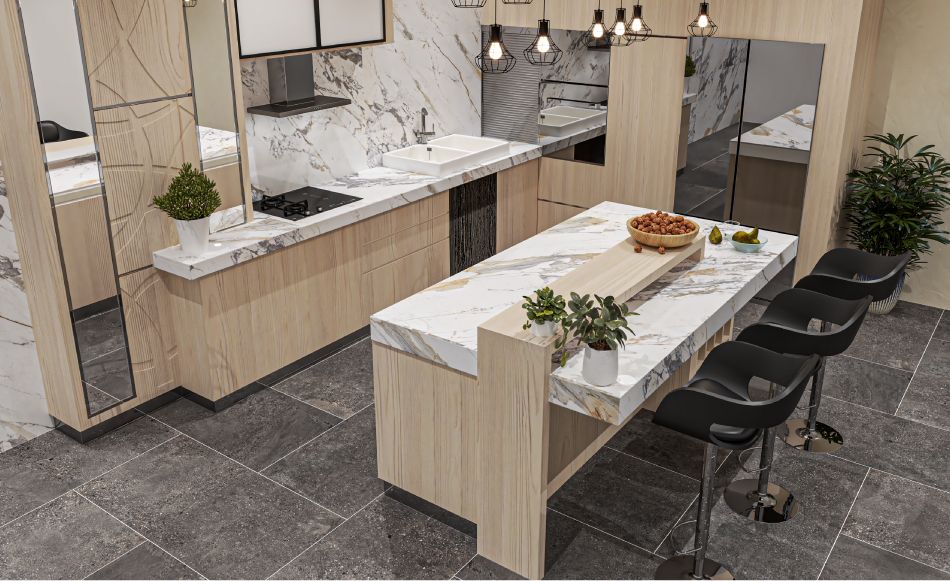
1. Light and Airy
For kitchens that have a brighter outlook or light wood accents such as sandalwood or elm, going with light colors on the countertop is a great way to keep with the color theme while maintaining the airy and open feeling that the light shades afford.
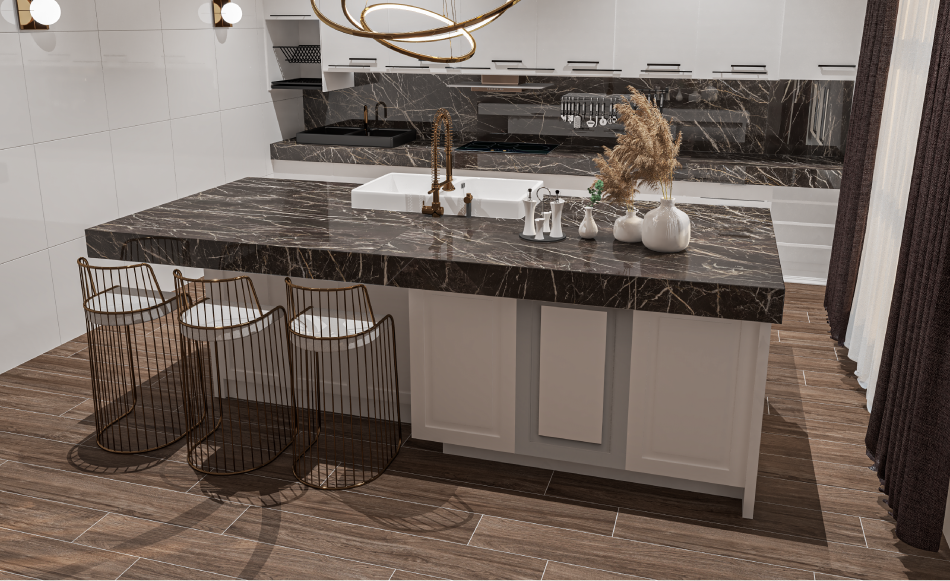
2. Bold and Dramatic
For an elegant and dramatic look and feel, a glossy black countertop does just what you need. The deep shade of black is a great complement for darker décor, and when paired well, can yield a very satisfying and even cosy atmosphere.
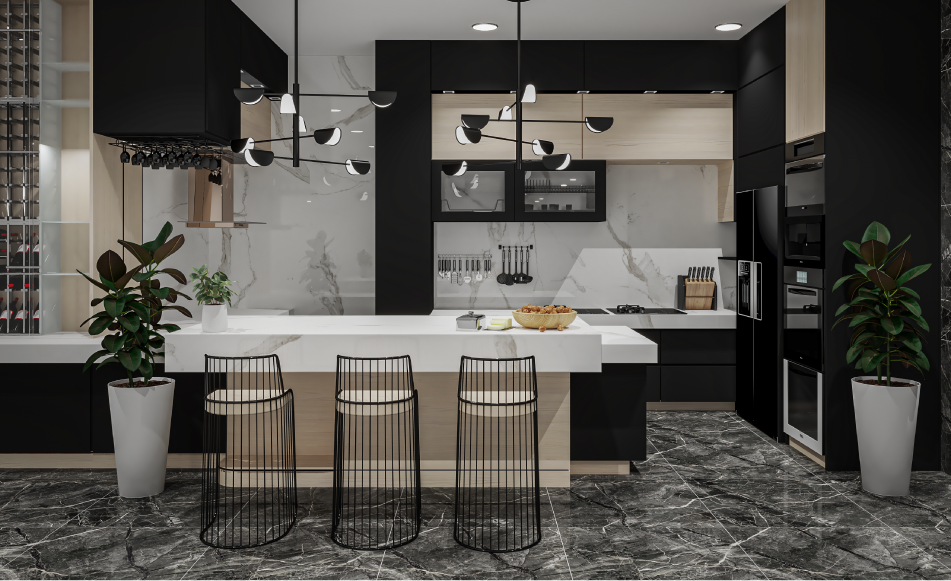
3. Elegant and Classic
There’s no denying the appeal of the classic marble look, which is effortlessly elegant and ever so easy to love. The traditional look of marble especially goes great when paired in contrast with black surfaces, creating a space that is definitely worthy of envy.
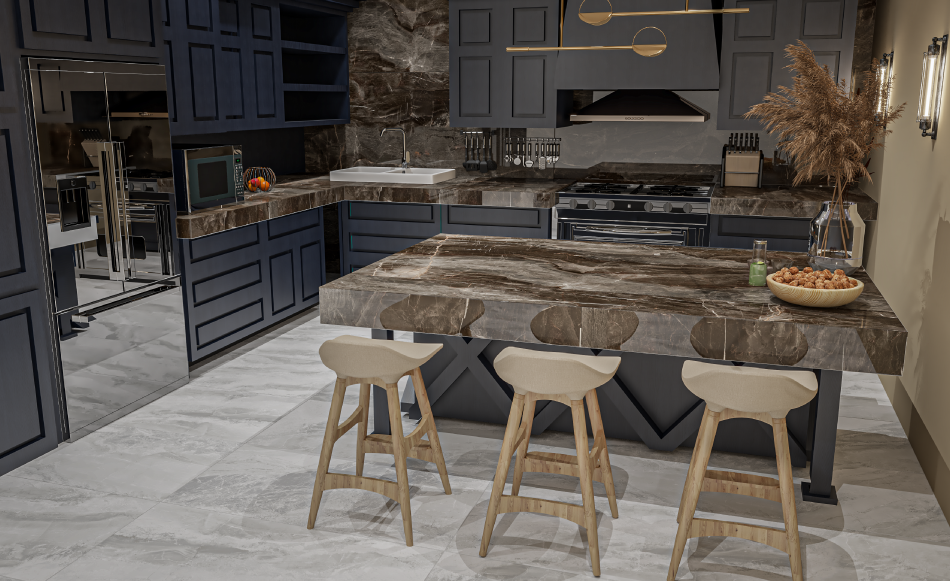
4. Deliciously Glossy
When you want something that’s not all black or white, going with a glossy grey is also a good way to add depth to color without darkening a space too much. What’s more, grey tends to work great with navy and brown, if you should desire to include those colors as part of your décor.
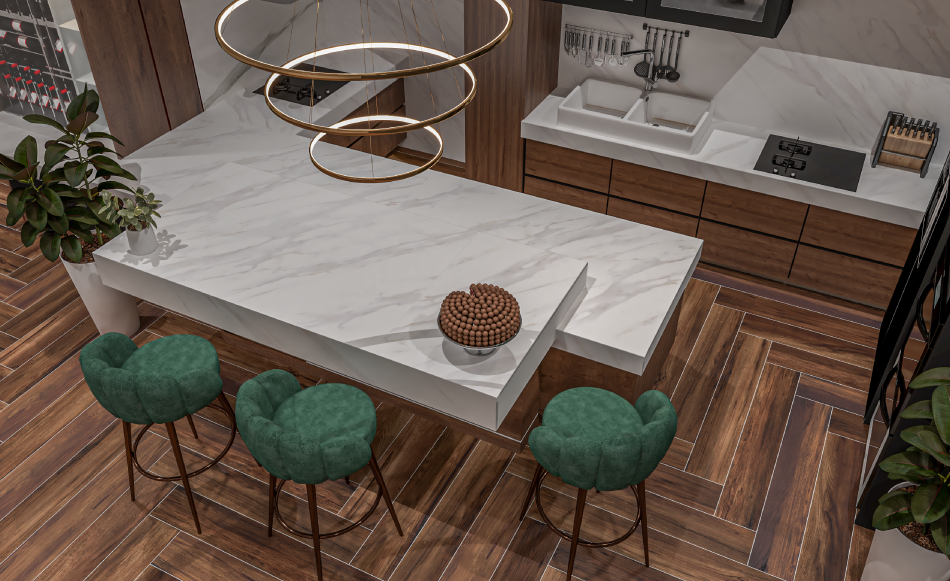
5. Bright and White
The pristine surface of white marble has been a favorite among many going back hundreds of years, and it’s easy to see why! Not only does it look and feel clean, but it also helps brighten up any space and gives everything in its vicinity a wonderful glow.
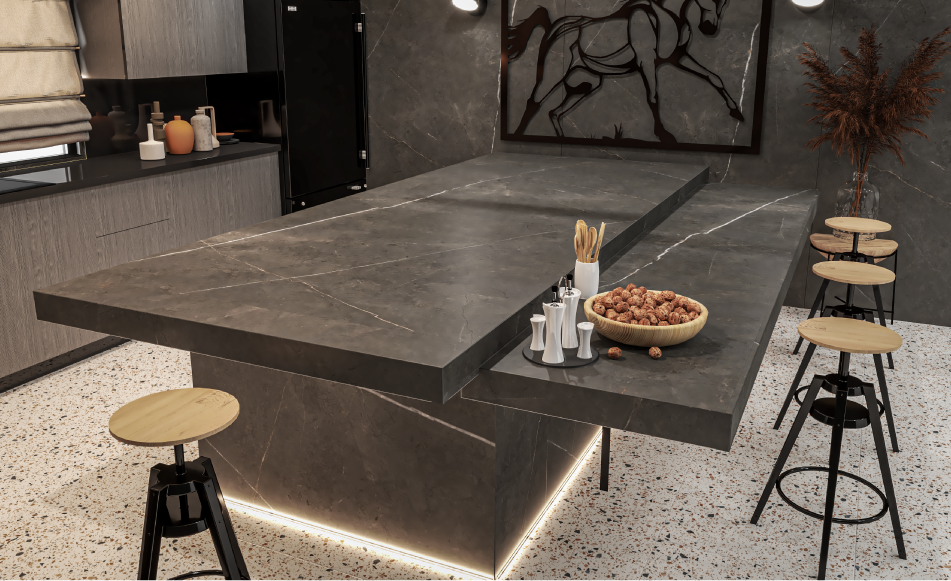
6. Honed and Mysterious
Of course, the understated look of a dark–honed surface also has its unique allure – as honed surfaces tend to absorb rather than reflect light, strong lighting is a good complement for these dark surfaces, which helps the colorful elements stand out all the more.

